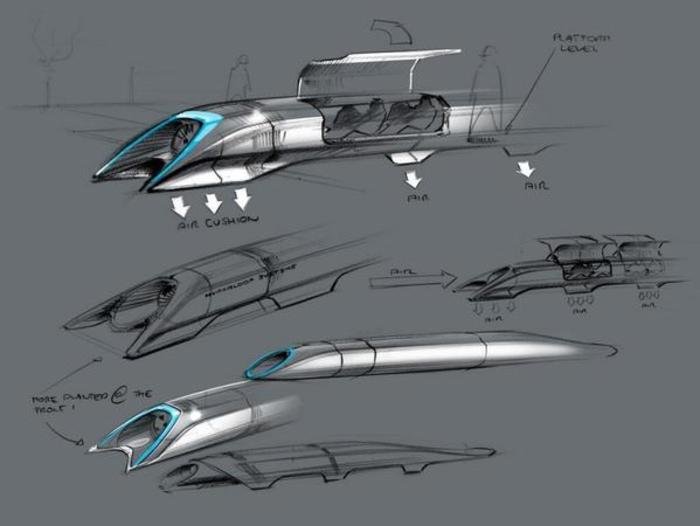1 of 3 |
Tech genius billionaire Elon Musk unveiled his alpha design for a super-speed transit system Monday to much fanfare, and his "hyperloop" was met with a predictable mix of enthusiasm and skepticism.
In short, Musk proposed building an elevated or underground tube between San Francisco and Los Angeles which would propel small vehicles at upwards of 700 miles per hour on a cushion of low pressure air while eliminating uncomfortable gravitational forces associated with high speeds.
The response seemed mostly divided into two camps: those who though the idea was an impossible pipe dream, and those who thought Musk's idea -- possible or not -- was important to moving innovation forward.
"Is it too good to be true? Yes, for now," said Samuel Stanley, senior research fellow at Reason Foundation. "And Musk knows it. But that doesn't make the idea any less relevant."
Instead, Stanley says the politics of implementing the project -- dealing with its costs, where and how to build it, and whether it would bring enough profit on return -- is likely to hold up the project, not whether it's technically possible.
"Musk has done an admirable job of setting the stage for a useful public discussion," Stanley said. "Now we should be more focused on the long-run economic merits of his proposal instead of the short-term technical hurdles."
For many, Musk's name and his success with making electric cars sexy (Tesla Motors) and space transport commercially feasible (SpaceX) gives the Hyperloop more credence than it might otherwise get.
"What makes Elon Musk’s particular design fiction potentially more powerful, or at least more newsworthy, than, say, an unknown civil engineering student’s, isn’t that it’s 'better,'" said Fast Company's John Pavlus. "It’s that it’s vastly more visible and credible because of Musk’s resources, and, to be frank, his track record."
Pavlus said the Hyperloop plan's value is that it moves the ball down the court in terms of innovation.
"The standard of a well-wrought design fiction is at once lower and higher than an actual product or system," Pavlus writes. "It doesn’t have to have all the holes plugged. It’s not meant to be production-ready. But it also should be radical, out-of-the-box, worthy of debate, larger-than-life."
"It should be singular, so as to spin off as many tangent, reactive ideas and conversations as possible. That’s the only way it can do any good. By that measure, Hyperloop just might be succeeding. (Too early to tell, though."
But researchers were quick to point out the potentially critical flaws in Musk's proposed design.
"The biggest concern with this plan has to do with temperature," said Navigant's Sam Jaffe. "The pod will be compressing air and expelling it downwards and backwards. All that air compression creates an enormous amount of heat, which can damage the pod and its machinery."
"There may be an elegant solution for this challenge, but it’s not in Musk’s current paper," Jaffe said.
Others pointed out the inherent dangers of moving people at extreme speeds in a small tube, should anything go wrong.
"It's doable, but you have to build a track or tunnel that's very straight," said James Powell, a physicist and the co-inventor of the Maglev magnetized transportation system used in high-speed rail.
"At that speed, the track has to be straight and flat, to avoid bumpiness," Powell explained. "When you're going 600 miles per hour, you can't really go around curves, and you'd have to be very flat, because without causing excessive G-forces, you probably wouldn't be able to adjust to changing elevations rapidly."
"If you are in the tube, and it is off by the slightest amount when it is going at top speed, then that would cause a sideways acceleration," or a crash, explains John Harding, former chief Maglev scientist at the U.S. Department of Transportation. "It has to be incredibly straight. You can’t avoid things."
"That is not really viable due to the safety problems involved," Harding said. "In an airplane going that fast you get a problem and you can drop down to a lower altitude. In an evacuated tube what could you do?"
Hyperloop Alpha















